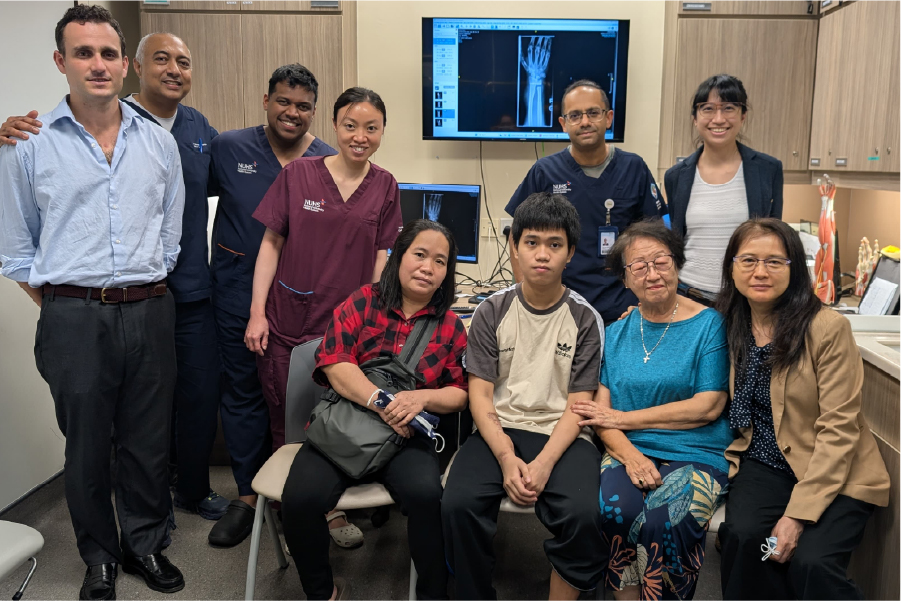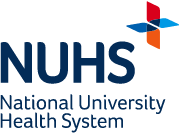 Subscribe and ensure you don't miss the next issue!
Subscribe and ensure you don't miss the next issue!
Severe upper limb injuries often result in long-term disability, especially when multiple structures — muscles, tendons, nerves and joints — are affected. For patients with extensive damage, conventional treatment options may be limited. At the Complex Reconstruction Clinic (CRC) within the Hand and Reconstructive Microsurgery Centre (HRMC) at the National University Hospital (NUH), patients are evaluated and managed through a multidisciplinary approach focused on restoring as much hand function as possible.
Held once a month, the CRC brings together senior hand surgeons, orthopaedic specialists and rehabilitation therapists to assess and plan personalised surgical and post-operative strategies. Many patients seen at the clinic require multiple procedures, each with clearly defined goals for improving strength, mobility and independence in daily activities.
“We focus on restoring specific functions, such as grip, forearm rotation or finger movement, that can make a difference to a patient’s ability to care for themselves or return to work,” says Adjunct Assistant Professor Lim Jin Xi, Senior Consultant, Department of Hand & Reconstructive Microsurgery. “These are often complex cases involving multiple surgeries and long rehabilitation, and they require coordinated input from different specialties.”
Surgical reconstruction after electrical burns
Mr Duong was referred to NUH one and a half years after sustaining severe electrical burns while repairing a roof antenna, leaving him with severe damage to both his upper limbs. He was unable to move his fingers or rotate his forearms, and relied on his mother for assistance with feeding and daily tasks.
When the team at CRC first assessed Mr Duong, they found that his hands had lost much of their ability to function. The muscles no longer worked, and the tendons in his forearms were stuck in thick scar tissue, which impeded movement. He also had serious damage to the joint near his wrist that allows the forearm to rotate. On top of that, the nerves in his hands were impaired, which meant he had little to no feeling in his fingers.
To improve Mr Duong’s hand function, the team carried out a series of carefully planned procedures. They redirected some of the working muscles in his forearms to take over the job of moving his fingers. The tendons, which had become stuck in scar tissue, were freed up so they could glide more smoothly. To prevent further scarring and allow better healing, a patch of healthy skin from his foot was transplanted to his forearm. Because the injury had damaged the joint that allows the forearm to turn, the surgeons modified the bones near his wrist to restore that movement. Finally, to help restore sensation in his hand, they used a piece of nerve from his leg to reconnect one of the major nerves in his arm.

Two months after surgery, Mr Duong was able to write and feed himself independently. He continues to undergo rehabilitation, and further improvements in hand function are anticipated.
The CRC continues to receive referrals from within Singapore and the wider Asia Pacific region. Many are patients with long-standing injuries, failed prior surgeries or complex trauma requiring secondary reconstruction.
“We work closely with referring physicians to assess whether surgical reconstruction can provide meaningful functional improvement,” says Adjunct Assistant Professor Soumen Das De, Senior Consultant, Department of Hand & Reconstructive Microsurgery. “Our aim is to offer patients clear information, realistic expectations and a structured plan tailored to their individual condition.”
| New home for hand clinics |
| The Hand & Reconstructive Microsurgery Centre is now located at Level 19 of the NUH Medical Centre. The new space brings related services together and is designed to make visits more convenient and comfortable for patients: |
| Care in one location: Surgical consults, rehabilitation, diagnostic imaging, pharmacy and nursing support are co-located, enabling patients to receive multiple services in a single location. |
| Easier access for all: The clinics feature inclusive layouts to support patients using wheelchairs, walkers or other mobility aids. |
| Smoother, more efficient visits: By bringing services together, patients spend less time transferring between appointments, making each visit much more streamlined. |
| A more comfortable experience: Smart systems, powered by artificial intelligence and data analytics, help monitor patient flow and space usage in real-time, supporting a more organised clinic environment while also reducing unnecessary energy use. |
Like this article? Simply subscribe to make sure you don't miss the next issue of EnvisioningHealth!





















